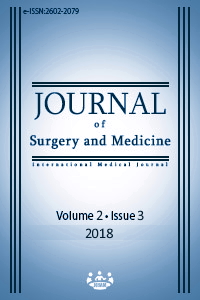Impact of a program of induced stress therapy on the motor and functional recovery of the upper limb of hemiplegic patients in Kinshasa, Democratic Republic of Congo
Keywords:
Stroke, Hemiplegia, Upper limb, Induced stress therapyAbstract
Aim: Stroke is a major cause of disability. As a result of rehabilitation, 80% of hemiplegic patients recover in particular, whereas only 28% to 57% recover the grip. Aim of this study is to evaluate the effects of induced stress therapy on motor and functional recovery of the hemiplegic upper limb, to compare the pace of recovery and upper limb autonomy between hemiplegics subjected to induced stress therapy and not subject to induced stress therapy and evaluate the impact of this therapy in the prevention of upper limb neuromuscular complications and disorders.
Methods: This is an interventional study conducted in 30 hemiplegic vascular patients followed at the University Clinics of Kinshasa and at the General Reference Hospital of Kinshasa for 6 months. The pace of recovery was evaluated by the motor index of Demeurisse. We used Pearson's chi - square to compare the results. The significance level was considered for the value of p≤0.05.
Results: The mean age of these patients was 57.5 ± 10.5 years, with a male predominance (63.3%). The majority of these patients were civil servants (23.3%), traders (16.7%) and teachers (16.7%), trades making frequent use of the upper limb. After 6 months of re-education, there was no significant increase in tone in patients undergoing stress-induced therapy (p = 0.34), whereas, for the comparison group, the increase in tone was very significant (p = 0.01); a very significant improvement in motor function (p = 0.000) was observed for the group of induced stress therapy, and significant (p = 0.05) for the comparison group. The progression of pain was good for the group of induced stress therapy (p = 0.02), and negative for patients not subjected to induced stress therapy (p = 0.5).
Conclusion: In the course of this study, it was found that induced stress therapy is effective in the functional recovery and prevention of neuro-motor disorders of the upper limb of the vascular hemiplegic.
Downloads
References
Gillume R. Cardiovascular disease in the United States: An epidemiologic overview, In: Elijah Sounders, Cardiovascular Diseases in blacks; F.A. Davis Company 1991:pp 3-16.
Zuber M. Prise en charge de l'accident vasculaire cérébral ischémique constitué au transitoire, Rév. Praticien 1997, Tome 11 n°397 : pp 24-30 ;
Turpin V. Pourquoi, quand, comment traiter les dyslipoprotéinémies? Nouvelle édition1991; p 18.
Donnison CP. Blood pressure in the African native: It's bearing upon the aetiology of hyperpression and arterial sclerosis. Lancet 1929;1:6-7.
WORLD HEALTH ORGANIZATION. Non-communicable diseases: a strategy for the African region who regional office for Africa, Harare 2000.
Beevers DG, Prince JC. Hypertension: an emerging problem in Hospital countries royal. Trop Med. 1991;85:324-6.
Tambwe M, Mbala-mukendi M, Dikassa LN, M'buyamba-kabangu JR, Morbidity and mortality in hospitalized Zairean adults, South Afr J Med. 1995;85:74.
Nicolas P, Pélissier M, Bénaim Ch, Villy J, Hérisson E. les techniques d’inhibition de la spasticité : Concepts, Méthodes et analyse critique, in Perrenou D, Brussel B., Pélissier J., la spasticité, 2001; P.63-69.
Kouassi B, Renambo TJ, Piquemal M. Accidents vasculaires cérébraux en Côte-d'Ivoire, CR 60 sens. Inst Cardiol d'Abidjan, Trop cardiol 1992 (n°SPI);154.
Brugerolle B. Les accidents vasculaires cérébraux, institut régional de réadaptation de Nancy, centre de réadaptation et de pré orientation. Ann Readapt. 2013;73-89.
Cynthia MC, Stein JN. Cardiovascular diseases and the aging woman: overcoming barriers to lifestyle changes, current women's. Health reports 2002 ; 2:366-72.
Xhardez Y. Vade-mecum de Kinésithérapie et de rééducation fonctionnelle. Maloine, Paris. 2002 ; p. 482-489.
Isabelle M, Didier M. Prise en charge initiale des accidents vasculaires cérébraux Service de neurologie A, hôpital GUI de Chauliac 2, www. Urgence pratique.com/2 articles/medic/artmedica l9.htm
Diela B. Prise en charge rééducative post accident vasculaire cérébral aux Cliniques Universitaires de Kinshasa: Mémoire de fin d’études UNIKIN, 2013 ; P33.
Partridge C J. Physiotherapy approaches to the treatment of neurological physiotherapy, A problem-solving approach, NEW YORK: Churchill – Livingstone. 1996; P.3-14.
Wolf S. Effect of Constraint-Induced Movement Therapy on upper extremity function 3 to 9 months after stroke. The EXCITE randomized clinical trial, American medical association, 2006.
Simon O. Rééducation par contrainte induite, in Yelnik A, Daniel F, Griffon A, Actualités dans la prise en charge de l’AVC, 2010; p. 89-95.
Downloads
- 1528 1822
Published
Issue
Section
How to Cite
License
Copyright (c) 2018 Teddy Bofosa, Eric Kam, François Njimbu, Ponce Mpefi, Tharcis Kayembe, Betty Miangindula
This work is licensed under a Creative Commons Attribution-NonCommercial-NoDerivatives 4.0 International License.















